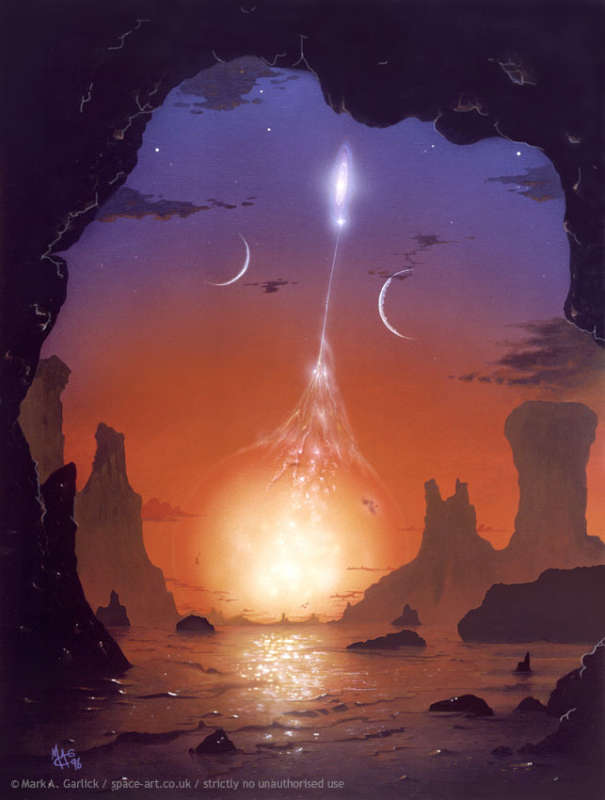
|
Credit & Copyright: Mark A. Garlick
(Space-art.co.uk)
Explanation:
Will this dawn bring another nova?
Such dilemmas might be pondered one day by
future humans
living on a planet orbiting a
cataclysmic variable
binary star system.
Cataclysmic variables involve gas falling from a large star onto an
accretion disk surrounding a massive but compact
white dwarf star.
Explosive cataclysmic events such as a
dwarf nova
can occur when a clump of gas in the interior of the
accretion disk
heats up past a certain temperature.
At that point, the clump will fall more quickly onto the
white dwarf and land with a bright flash.
Such dwarf novas will not destroy either star,
and may occur irregularly on time scales from a few days to tens of years.
Although a nova is much less energetic than a supernova, if
recurrent novas are not
violent enough to expel more gas than is falling in,
mass will accumulate onto the
white dwarf star until it passes its
Chandrasekhar limit.
At that point, a
foreground cave may provide little protection,
as the entire white dwarf star will explode in a
tremendous supernova.
|
January February March April May June July August September October November December |
| ||||||||||||||||||||||||||||||||||||||||||||||||
NASA Web Site Statements, Warnings, and Disclaimers
NASA Official: Jay Norris. Specific rights apply.
A service of: LHEA at NASA / GSFC
& Michigan Tech. U.
Based on Astronomy Picture
Of the Day
Publications with keywords: nova - cataclysmic variable
Publications with words: nova - cataclysmic variable
See also:
